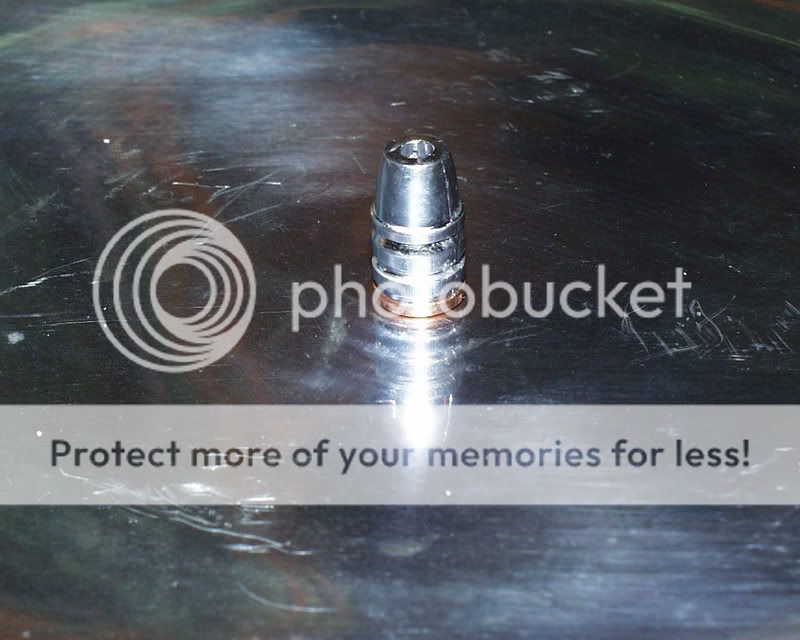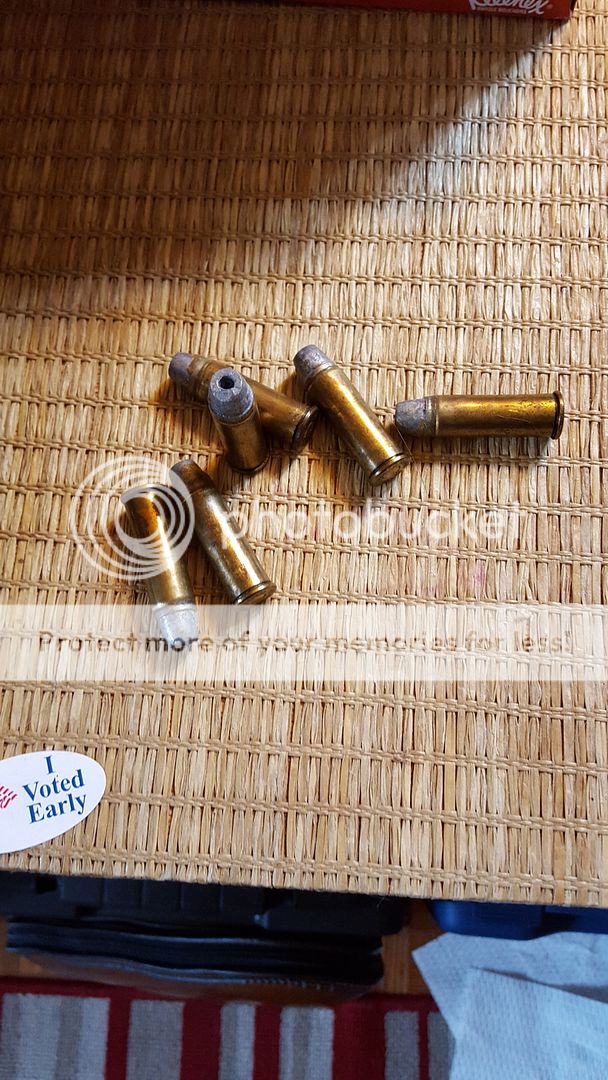Ricochet
Member

These are #429244HP bullets that I cast in 2007, with normal copper Gator checks on them. I dipped them in my homemade lube (which shoots well) that started off as a can of Johnson's Paste Wax and as I used it down I topped it back up with yellow beeswax, yellow raw anhydrous lanolin, most of a slack wax toilet bowl ring, scraps of random paraffin waxes and a bit of Alox 606-55. I have quite a few bullets that have been stored for years in this basement which has flooded on several occasions and accordingly has had high humidity. The bullets were in a bag open to air, not in sealed plastic containers as many of them are. All of my gas checked bullets stored after dipping them in the molten lube show this heavy green verdigris on the copper checks. Unused checks and other copper and brass items have not done this, only where they were coated with lube. I think this is fatty acid corrosion on the copper. The ingredients containing fatty acids are beeswax and lanolin. I've never heard of beeswax doing this, but I seem to recall reading that unrefined wool fat may contain a good bit of free fatty acids. Come to think of it, I saved and put in a good bit of that soft red wax that some cheeses come coated with. I suppose that could have something to do with it. It won't hurt a thing to shoot these this way, but I need to be sure I don't leave any of this loaded in cartridges long lest they corrode the brass case necks. Has anyone else run across this?


